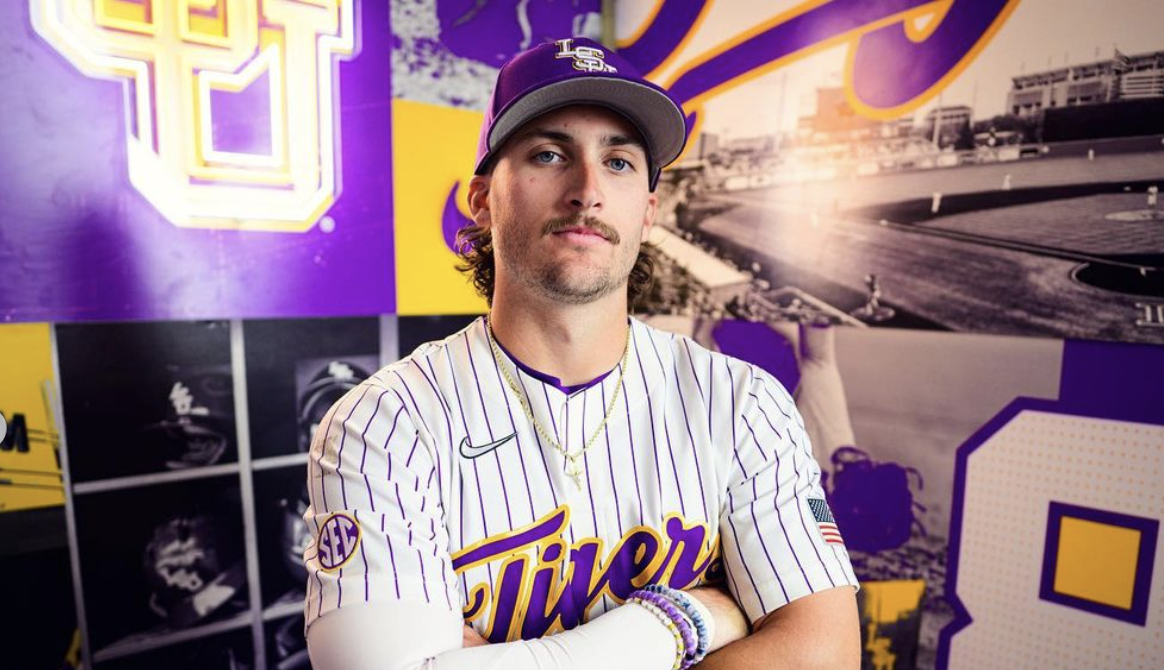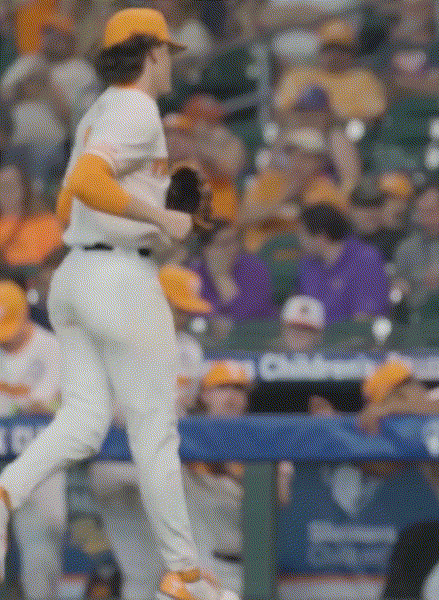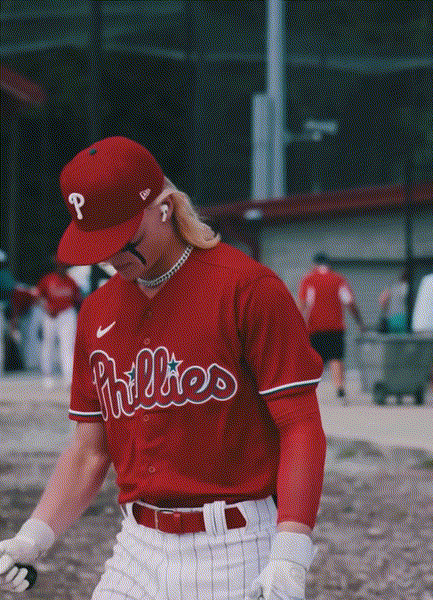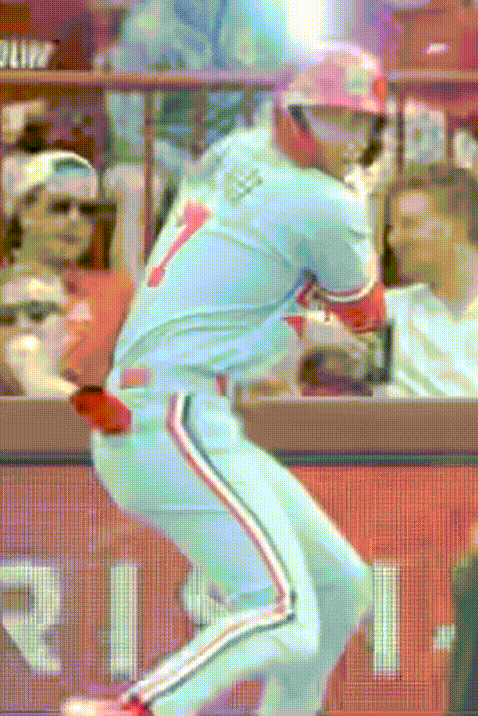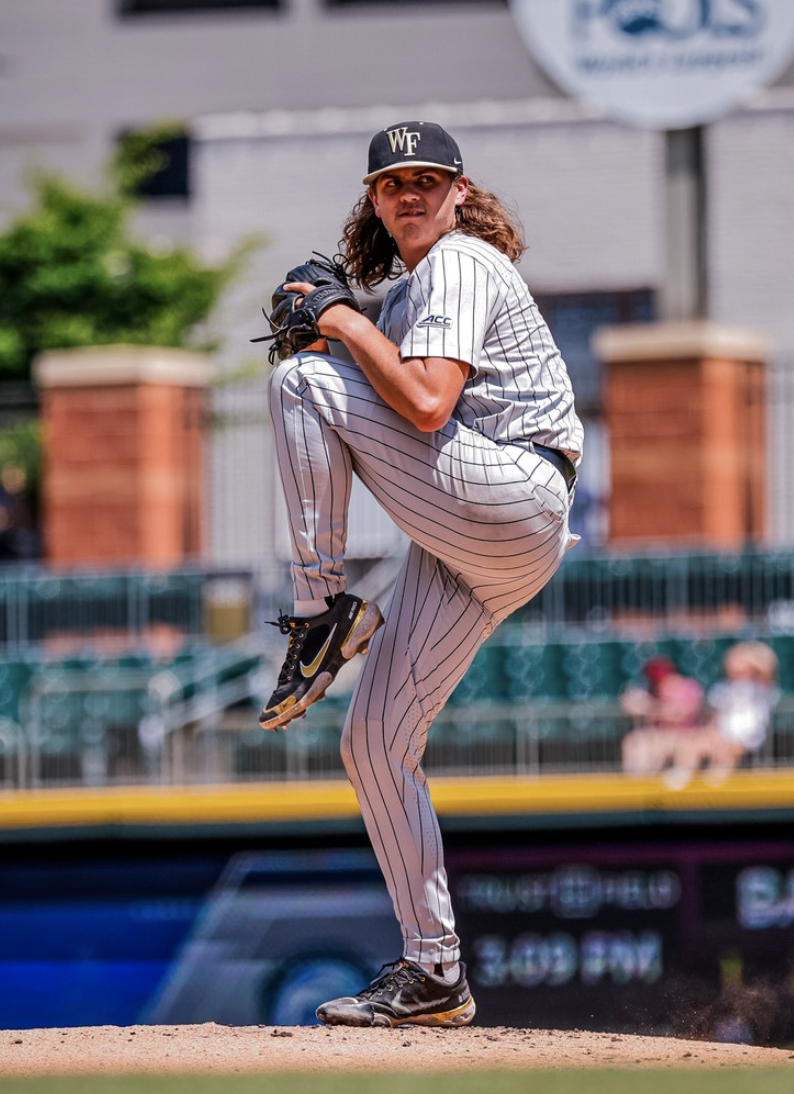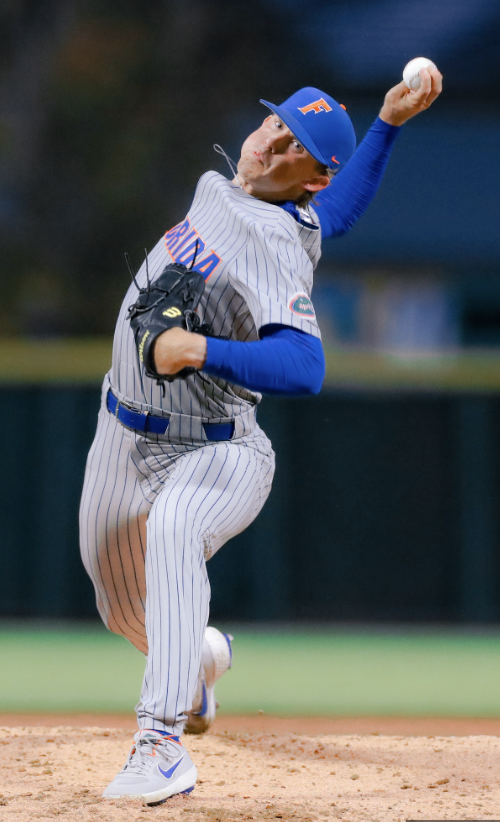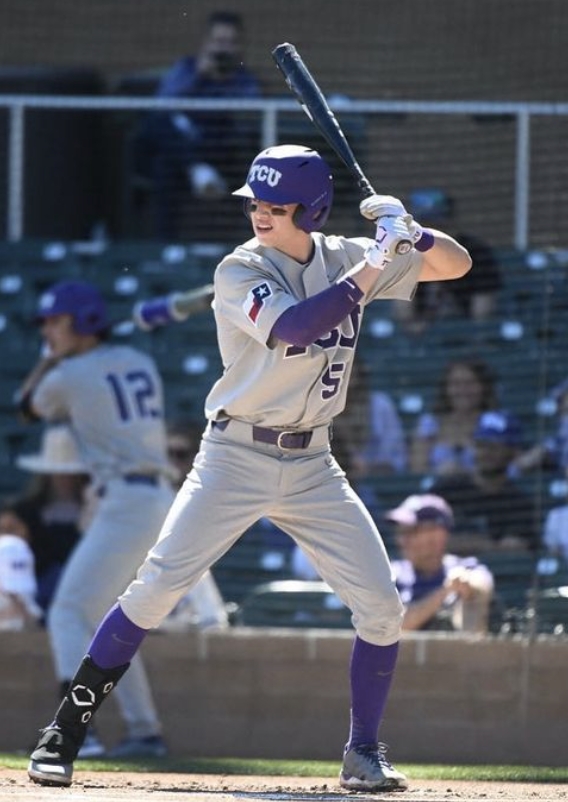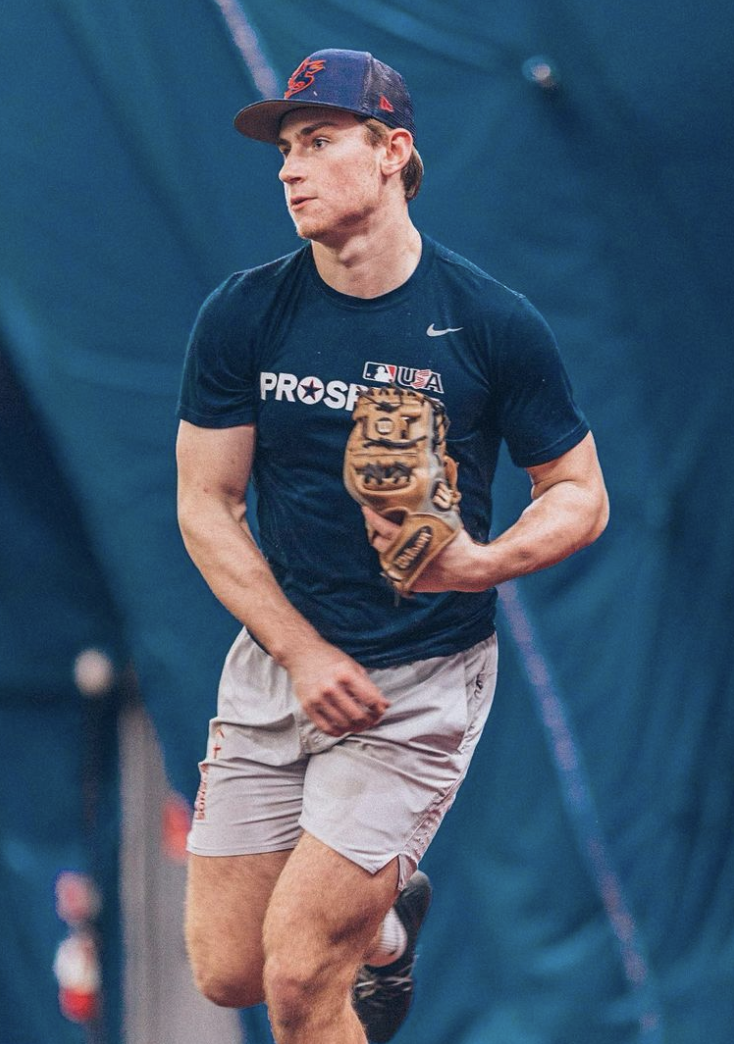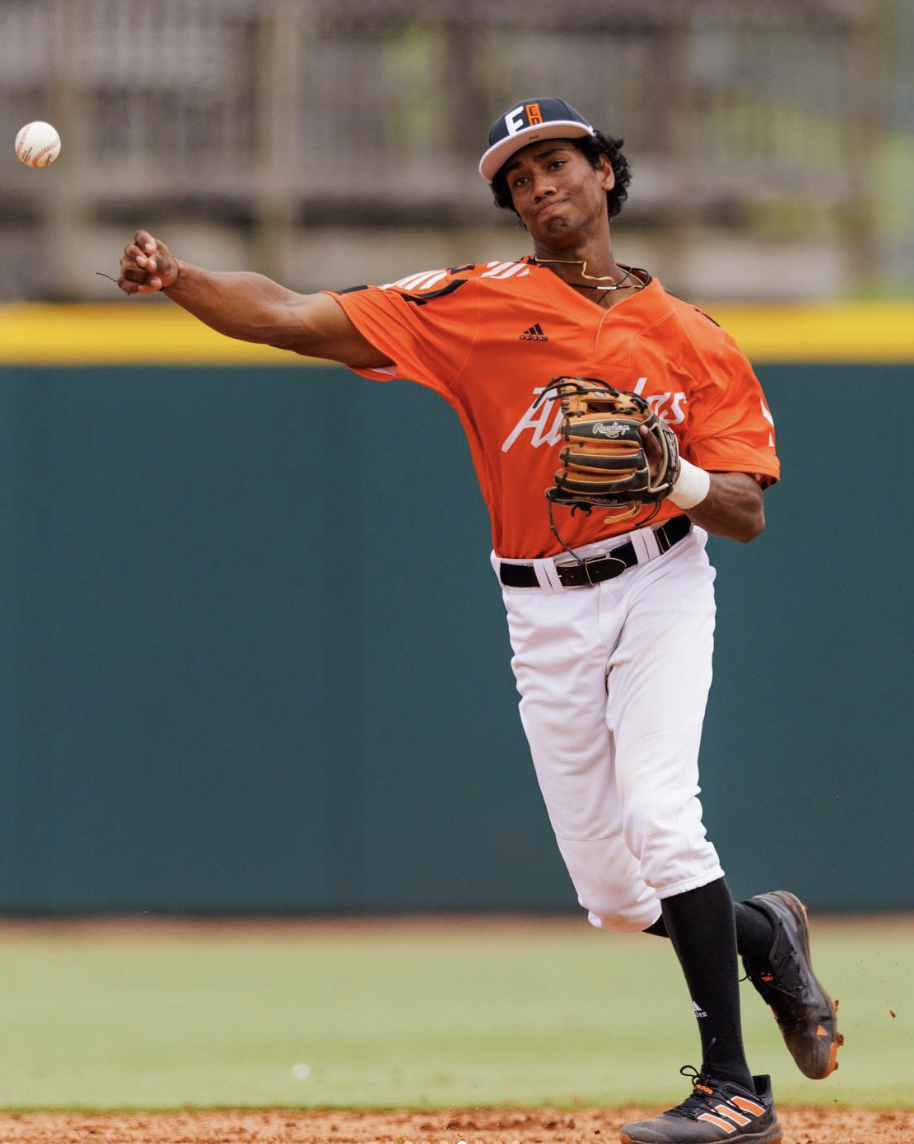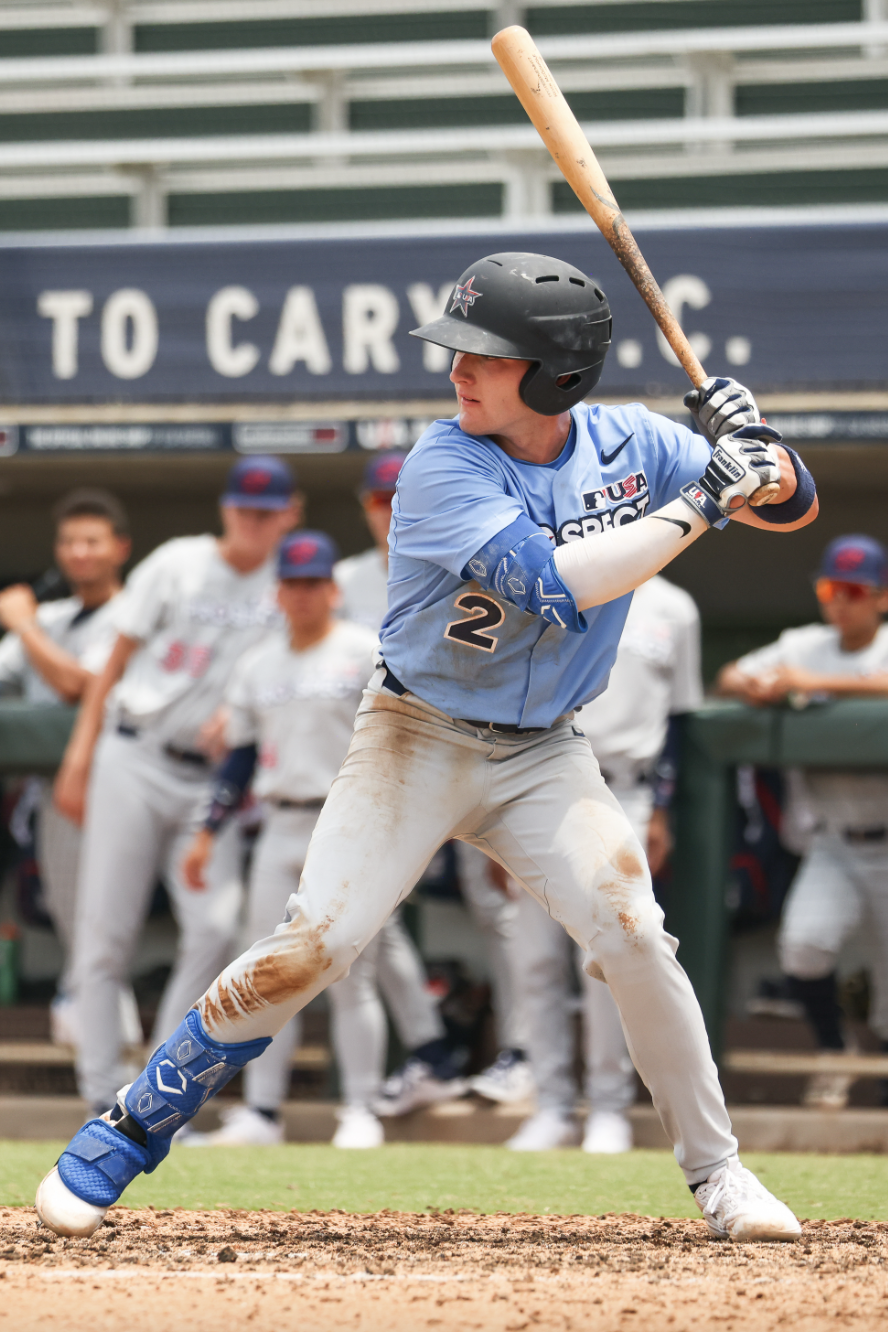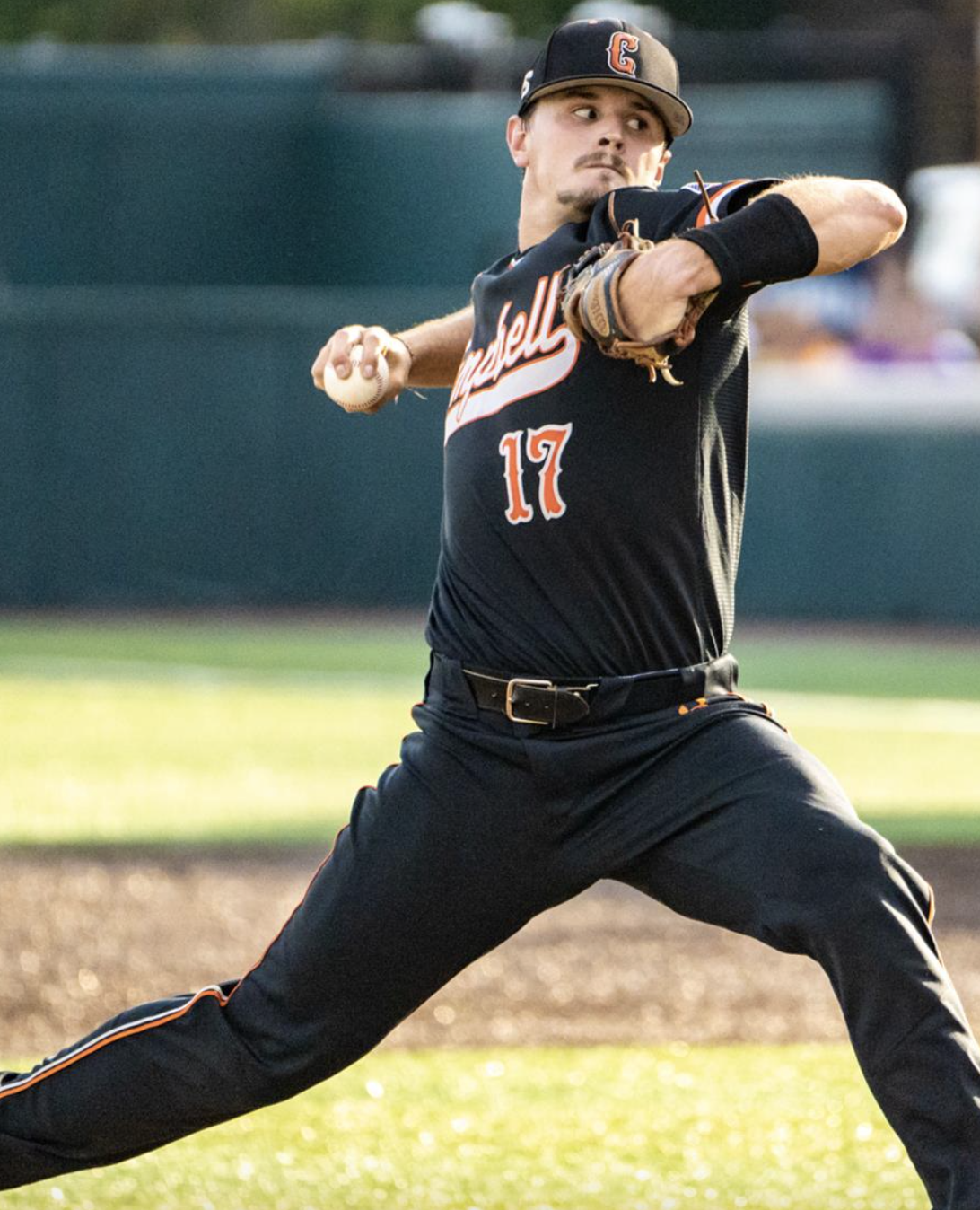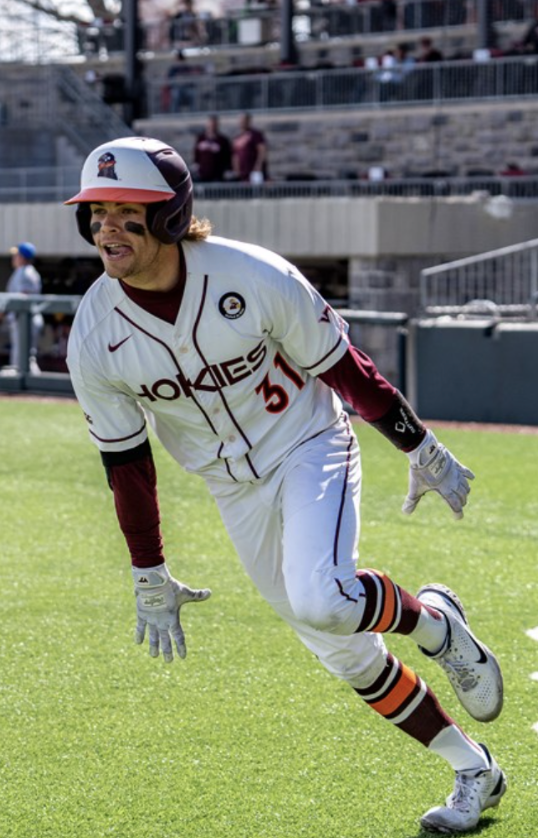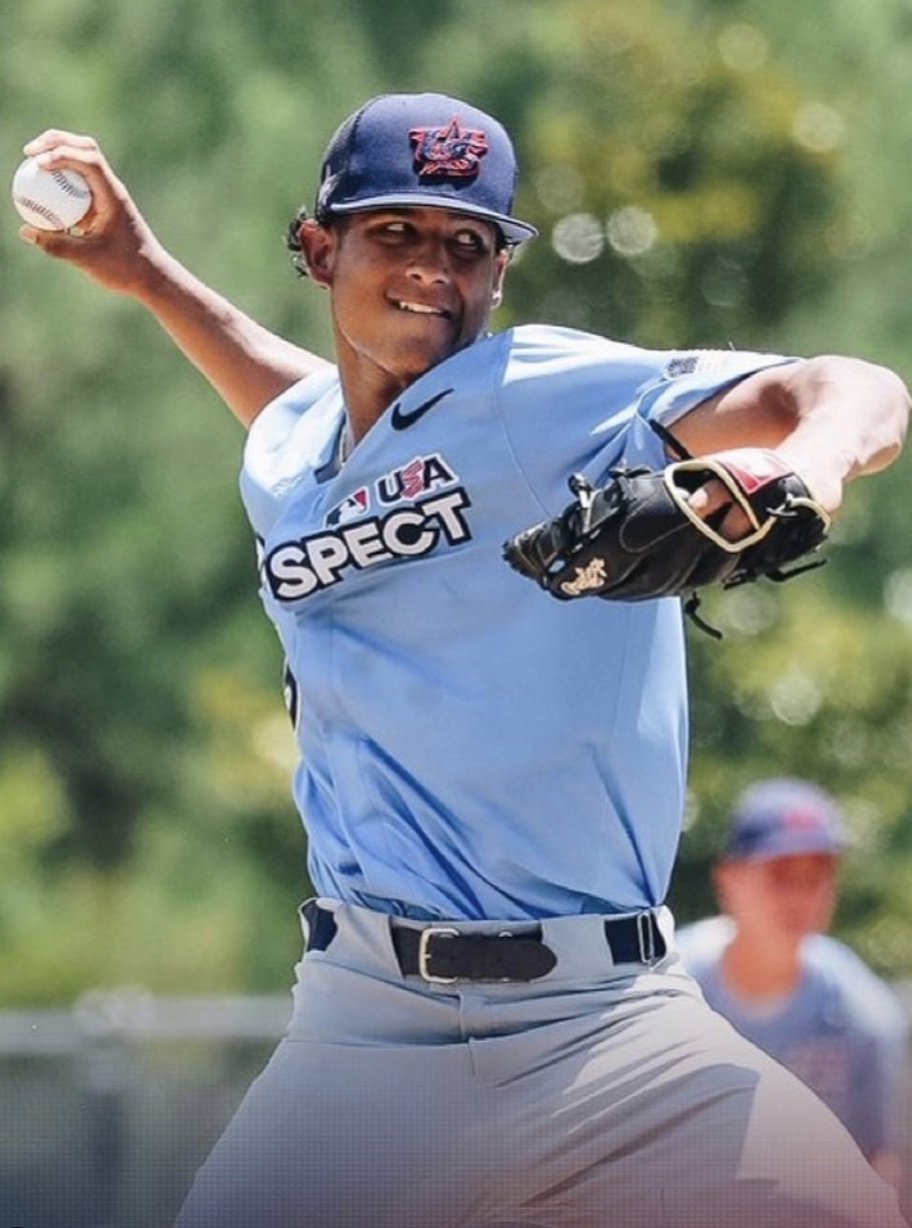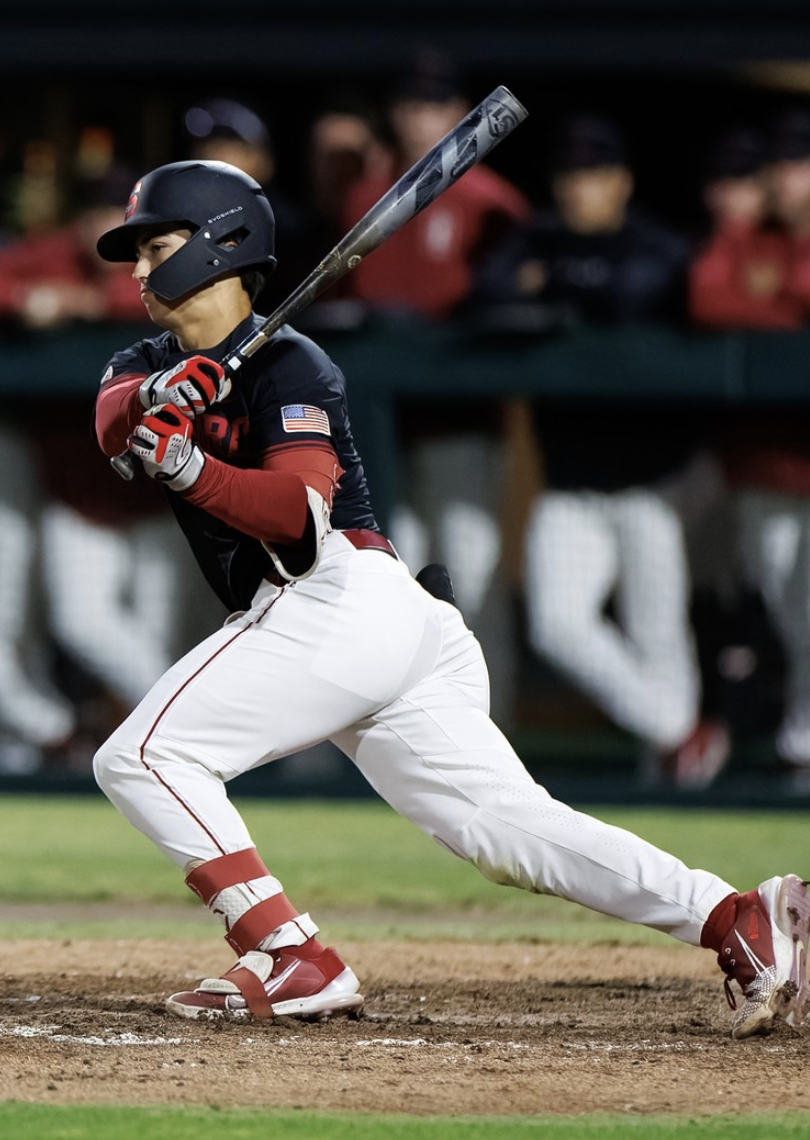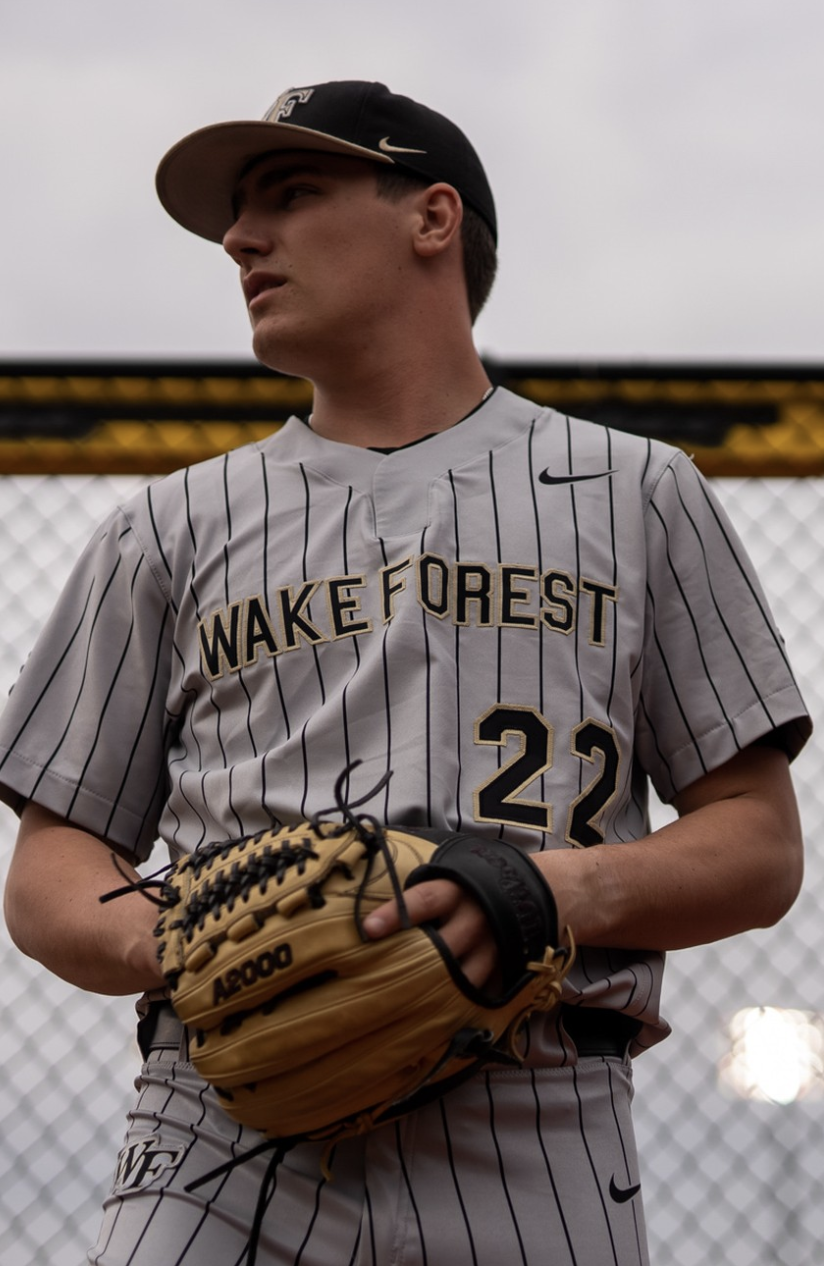A new year, a new board and new ranks. The Top 300 is here. With the summer showcase circuit behind us and college fall ball in the rearview mirror, we’re ready to re-rank the 2023 draft class. Our team has taken in nine showcase tournaments and been closely monitoring fall scrimmages, including sitting in on several exhibitions. You can find a lot of our film and live looks in each player’s blurb below. We’ve collected data and pitch metrics from guys showcasing their summer gains and, boy, do things look promising. Some guys are breaking out. As always, our boards are built on three pillars:
Our team’s Live Looks.
Trackman, Rapsodo and data evaluation.
Conversations within the industry. What are scouting executives, cross-checkers and area scouts seeing at the ballfields?
This Top 300 really establishes a few things:
This year is shaping up to be a pretty healthy year for the draft. It would appear better than the last two or three classes.
This class is led by a strong and deep crop of college talents.
1. Chase Dollander
Right-Handed Pitcher, Tennessee
The real deal. A buttery delivery with a low-launch, three-quarter arm slot and electric arm speed. Some evaluators compare the way he moves to Jacob deGrom. The fastball eats. It’s got ride, run and immense deception. He can run it up to 99 and hold mid-90s. Dollander mixes in a bevy of pitches, but it's his tight, sweeping slider that gets whiffs. Some scouts project it double-plus and the best breaking ball in the class. Dollander offers a big, high-70's curveball with huge sweep, though he's hardly had to use it. He'll also flash a changeup. Dollander has premium command, pitch-ability, athleticism and polish. Pretty much the complete package. The argument can be made he's the best college pitching prospect in over a decade.
2. Dylan Crews
Outfield, LSU
Crews burst onto the scene as a true freshman, crushing baseballs, earning All-American honors almost unanimously. He carried that over into an equally impressive sophomore campaign in 2022. Crews produces elite exit velocities and balances the raw power with a strong approach and feel for the strike zone. He doesn't strike out and draws a ton of walks as well, though the swing-and-miss can get streaky against better stuff. In the field, Crews is likely destined for right field where his plus throwing arm and above average speed will be valuable assets. Crews is as close to a 5-tool talent as you’ll find in this class and could move quickly through the minor leagues given his position and skillset with the bat. He’s got a way about impacting the game in every aspect of the game.
3. Wyatt Langford
Outfield, Florida
Langford has been an offensive force for the Gators providing plenty of punch and impact at the plate in Gainesville. This is a premium power bat with easy plus raw power to all fields. He's also an above average runner, but the legs play up thanks to strong instincts and burst in the field. He's probably destined for left field at the next level being pushed over by a superior defender up the middle, though there are scouts that believe he has a real chance at becoming an average big league centerfielder. His speed will be an asset at any outfield spot, but he does have a fringy arm that may preclude him from right field. Still, this bat will be drafted for the juice. It's one of the more impactful bats available in 2023.
4. Max Clark
Outfield, Franklin Community
A premium high school hitter. Clark has a fantastic feel for the strike zone and has a swing catered toward using the entire field. He's a pro hitter. Clark doesn't try to hit homers. He's a line drive machine. That said, he's really begun developing into plenty of game power and could run into 20+ HR at his peak. Clark figures to stick in centerfield where his 70-grade run times and strong routes should age beautifully. The floor here is pretty high as far as prep bats go. If there's one critique, scouts do question where the body can go from here. He's already incredibly strong and the physical projection portion of his profile may be lacking. His profile projects somewhere between Andrew Benintendi and Michael Harris II.
5. Jacob Gonzalez
Shortstop, Ole Miss
Gonzalez almost never strikes out, and he makes a ton of contact as well. This kid has fantastic eyes at the plate and can anchor any lineup he’s thrust into. His batted-ball metrics are loud. Really loud. He's got juice to the pull-side and only projects to develop more as he ages and works to understand what he's capable of. Some scouts question the swing mechanics at the next level as Gonzalez has a tendency to throw open his hips and can step in the bucket at times, but his production has never wavered against premium college stuff. Defensively, it's a solid average glove with an above average arm, though his size may ultimately shift him to third base. Gonzalez isn't a burner and probably won't be a base-stealer as a pro, but he’s a very good athlete.
6. Walker Jenkins
Outfield, South Brunswick
Jenkins is long, lean, athletic, and projectable at 6-foot-3, 205 pounds, showcasing some of the best bat speed and power in the class. He’s comfortably a plus runner with a huge arm that will play at any outfield spot. He's performed at every stop along the amateur circuit and earned a spot on Team USA 18u as an underclassman. It’s a premium bat in the 2023 class, even if he does physically mature into a corner role when it's all said and done. We’re talking about an thunderous bat that should hit for average and power. Skeptics worry about the myriad of injuries that have plagued Jenkins during his prep career. Jenkins has missed time with hip issues and a broken hamate bone, something teams will need to consider.
7. Enrique Bradfield
Centerfield, Vanderbilt
If Enrique Bradfield isn't the fastest player in the country, he's in the conversation. Bradfield will never been a thumper, but he's got elite vision at the plate, hardly ever expands the zone and walks just about as much as he strikes out. His frame still has room to add some muscle, so it wouldn't surprise scouts if he ended up with enough juice to run into double-digit homers at his pro peak. He’s a guy who knows how to get on base and is a nightmare for the opposition when he runs. In the field, he's comfortably a plus defender in center. We're betting on his dynamic glove, speed, and gamebreaking ability. He's a Kenny Lofton type of spark-plug that provides far more value than his slugging percentage will ever indicate.
8. Paul Skenes
Right-Handed Pitcher, LSU
While he has some two-way potential, Skenes has more upside on the mound working from a three-quarter arm slot with smooth mechanics, a short-arm action, hiding the ball on his back hip and creating a lot of deception. Skenes’ velo sits in low-to-mid 90s, though when he rears back he's been up to 99. He generates plenty of carry on the heater, with spin rates in the 2400 RPM range. Primary secondary offerings include a fall-off-the-table split-change and a devestating breaking slider, both in the low-to-mid 80s, the latter featuring extreme sweep when he wants to grab it. Skenes has shown the ability to manipulate the shape of his slider, and it's paid dividents depending on the handedness matchup. As far as the two-way potential goes, offensively Skenes has some contact issues but really excels at finding the barrel and has legitimate slugging potential. Evaluators certainly prefer the arm, but there’s two-way upside.
9. Rhett Lowder
Right-Handed Pitcher, Wake Forest
The reigning ACC Pitcher of the Year, Lowder has some of the best pitchability in the entire class. He's been into the mid-90's with the fastball, sitting in the low-90's later into starts with running life, mixing it with a good slider in the low-80's and a diabolical change-up with late parachute and fading life out of the zone in the mid-80's. It’s one of the best changeups in the class and comfortably projects plus. He can pitch backwards off the slider and change-up with ease and has good command and feel of his entire arsenal.
10. Aidan Miller
Third Base, JW Mitchell
Miller is one of the most physical preps in the 2023 class. He's big and athletic with explosive power that stems from a combination of raw strength and excellent bat speed. Miller is a consistent high-performer on the amateur circuit and his mammoth power finds it way into games already. He can run a fastball into the low-90s on the mound, but his future is likely swinging a bat. The body is already very thick and muscular, so he'll need to maintain his athleticism as he gets older. For now, it's comfortably a third base profile, with a corner outfield or first base role possible as he ages.
11. Matt Shaw
Shortstop, Maryland
Shaw does a little bit of everything well. He's a thick, twitchy middle-infielder who could certainly stick at shortstop, though some believe he could end up at second base or third base because of his shorter strides and muscular frame. Featuring above average power and a potential solid average hit tool, Shaw has impact in his bat and a mature approach. An above runner, maybe a tick more, he's got the potential to net double digit homers and stolen bases at his peak whilst developing into a Kike Hernandez type pro.
12. Hurston Waldrep
Right-Handed Pitcher, Florida
Waldrep transferred out of Southern Miss to Florida for his junior year after some impressive undergrad campaigns. The fastball gets up to 99 with immense hop at the top of the zone and true bat-missing qualities. The slider is thrown firm and short with late two-plane tilt that Waldrep gets hitters to chase regularly. The curveball may have the most potential of all his secondaries, but landing it for strikes consistently has come and gone. He's also flashed an above average splitter, though it's inconsistent both in shape and execution. Waldrep has a super-athletic frame with well-proportioned strength and a wicked quick arm. He's a true power pitcher with a bulldog mentality on the bump.
13. Jacob Wilson
Shortstop, Grand Canyon
The son of MLB-veteran shortstop Jack Wilson, Jacob Wilson has been one of the most accomplished, mature hitters in the country during his stay at GCU. He's got a prolific eye at the plate with an extremely advanced approach and a grand willingness to use the whole field. Wilson never strikes out. Like, ever. In 2022, he took 25 free passes, punching out just seven times. Wilson showcases 40-grade power but many believe he'll grow into fringe-average pop in the pros. He's an average defender at shortstop and could comfortably move to third base or second base. Elite instincts on the field and makeup off the field, Wilson checks a ton of boxes and is a very popular figure among his peers and evaluators.
14. Brayden Taylor
Shortstop, TCU
TCU's Brayden Taylor handled himself very well against the older and stiffer competition on the Cape this past summer for Falmouth after two big years at TCU. Taylor has a short, simple swing from the left side with good upper body rotation and whippy bat speed. Taylor’s profile is actually carried by the bat, showcasing loud line drive and fly ball exit velocities to his pull-side. Taylor shows a keen eye at the plate, refusing to expand his zone in favorable counts and commonly walking more than he punches out. He played a bit of third base, but with good range to his right and a strong arm, he projects a more natural fit at third base if he’s forced off the shortstop position. He is an average runner.
—> Our Interview with Brayden
15. Colt Emerson
Shortstop, John Glenn
Emerson showcased a whole lot of tools on the circuit in 2022 with an impressive hit tool and sneaky power. The swing is anchored by lightning quick hands that have feel to all-fields with some pull-side juice. Emerson has shown the ability to get to any ball in any quadrant of the zone and slash it gap-to-gap. Emerson is largely average on the dirt, though his range and hands do show better than his average speed. He may ultimately be a second or third baseman baseman, but if it's a plus hit tool, it won't matter where he plays. He’s put on a lot of muscle over the course of the last calendar year.
—-> Live Looks Film
16. Arjun Nimmala
Shortstop, Strawberry Crest
Long, lean and explosive describe Nimmala well. He started tapping into big power on the showcase circuit but still remains super projectable and likely to add plenty more strength. Right now, it's more power-over-hit, but scouts think the hit tool could be average too. There's potential here to be an athletic impact bat on the left side of the infield, likely at third base at the next level. Nimmala will be just 17 years old at the time of the draft and offers some of the most intriguing athlete upside at the top of the class.
17. Kevin McGonigle
Shortstop, Monsignor Bonner
McGonigle is a smaller, twitchy infielder with lightning for hands and impressive core strength at the plate. He's hit absolutely everywhere he's gone. It's a compact, strong, sometimes rotational cut that creates big pound-for-pound pull-side power, though McGonigle is in no rush to sellout for the juice. He'll ambush pitches over the right field fence, but it's not necessarily his game. This is an advanced hitter. McGonigle has a loose, flashy glove with bouncy actions on the dirt. He possesses an average arm and his feet can get short and choppy on balls his to his left and right. Some believe the profile is best suited as an impact second baseman, though proponents point to his athleticism, lateral burst and sparky actions as reasons to let him develop as a SS.
18. Cade Kuehler
Right-Handed Pitcher, Campbell
Kuehler developed extremely quickly upon arriving to Campbell. He's got a super-quick arm and natural deception that's been hell on the opposition. The fastball is already up into the upper-90s with top of the scale ride. He's really dialed in a slider/cutter that flash plus when he's got feel for it. Kuehler will need to continue throwing more strikes and ironing down the effort in his delivery as he develops and gets more college innings under his belt, but there's definitive day one upside here if the track record and production continue to impress.
19. Jack Hurley
Outfield, Virginia Tech
Hurley is a bit of a five-tool player who can impact the game. He's got the hit tool and the raw power, and he's got the speed to steal double-digit bags as a pro. If there's one critique, it may be that the throwing arm is below average, maybe a tick better. Hurley comes packed in an athletic frame with well-proportioned strength and organic loft built into his swing. He doesn't have to sellout for power or force things to his pull-side. He stays up the middle of the field, letting his bat speed handle the rest. An ultra-aggressive swinger of the bat, Hurley will need to polish up his approach as he sees more advanced pitching at the next level. It's caused him to go through occasional streaky periods of swing-and-miss, and his chase rates can balloon on him in a rut. Still, the impact and track record against velocity and spin has evaluators believing this is a big league regular bat.
20. Charlee Soto
Right-Handed Pitcher, Reborn Christian
Soto brings a lot of intrigue to the table. He's been up to 98 MPH, sitting 92-96 MPH with late running life. He's got a short biting slider in the mid-80's that he's primarily utilized against righties to garner chases, as well as a tumbling change-up in the same velocity band that he can command away from lefties with consistency. He can get a bit erratic with his strike-throwing at times, but there's a ton of upside to unlock here, plus he'll be one of the youngest players in this draft class.
—-> Our Interview with Charlee
21. Tommy Troy
Shortstop, Stanford
A very well regarded prep bat, Troy built off a strong freshman campaign at Stanford with an arguably stronger summer at Wareham. With notable power for his size, Troy has shown himself capable of going out to all fields, and finds a ton of barrels. Strong eyes and quick twitch gives him the ability to make good swing decisions consistently, and it is rare to see him post poor at-bats. Troy typically takes the field at second base, though he’s played a ton of reps at shortstop too. He has a strong arm for the infield with soft hands, smooth actions and good transitions around the bag. He'll likely be tested at shortstop for the Cardinal moving forward, but this is a definitive middle infield profile.
22. Noble Meyer
Right-Handed Pitcher, Jesuit
Jesuit HS in Portland, Oregon has become a total pitching factory. From Mick Abel to Nelson Keljo, Jesuit has a knack for developing arms. Meyer burst onto the scene during the 2022 showcase circuit with a fastball up to 98 featuring arm-side run and some ride. It's a deceptive slot that's tough to pick up too. His slider works into the mid-80s with sweeping action and short vertical tilt. Meyer offers a mid-80s changeup that lags behind his other two weapons, but shows enough promise for scouts to slap a future 50 grade on the off-speed offering. Meyer is also an impressive athlete coming from a 6-foot-5, long, lanky frame. He checks a lot of boxes.
23. Travis Honeyman
Outfield, Boston College
Honeyman has essentially been a steady performer throughout his college career, both on campus and in wood-bat summer leagues. A primary left fielder, Honeyman is an above average runner with high-level instincts. He's got a fringy arm, and will almost certainly stay in left field moving forward. Honeyman really began to turn heads as one of the better hitters on the Caps this past summer. It's solid-average power at the plate, mostly to his pull-side. Honeyman is a solid player in almost every aspect of the game and is a bit of a sum-of-his-parts type of player.
24. Thomas White
Left-Handed Pitcher, Phillips Academy
There are those that believe White is the best prep southpaw prospect available in any draft since Steve Avery was selected no. 3 overall in 1988. Better than Brien Taylor. Better than McKenzie Gore. Better than the whole lot of them. White has been a totem on the prep scouting scene since he was 13 years old. It's a whippy arm with huge projection, but already shoving gas. White has been up to 96 and many believe he'll approach triple digits when it's all said and done. He's shown feel for spinning the baseball, primarily a low-to-mid 70s curveball with tight tilt that projects. White can also pronate and turn over a changeup. At this stage, both of his secondaries are a work-in-progress, but show big promise. Given his size, his move down the mound and subsequent extension, the baseball explodes on hitters with life at the top of the zone. Skeptics do question the fastball command, however. That’ll be a big part of his development.
25. Teddy McGraw
Right-Handed Pitcher, Wake Forest
McGraw doesn't have the prototype size of some of his peers, but his sublime feel for a 4-pitch mix has evaluators drooling. He offers a four-seam and a two-seam fastball, the latter being more consistent, though McGraw showed a willingness to elevate the four-seamer on the Cape last summer. Given his low release and mid-90s velo, there's definitive swing-and-miss upside if he can find consistency up there. McGraw has a high-spin slider that's exceeded 3000 rpm in the past, up to 90 mph this spring. It's a two-plane sweeper with impressive depth and a bat-missing track record. The changeup shows promise too with feel for pronation. McGraw holds his velocity and stuff deep into his outings too, something not everyone on this list can necessarily claim.

